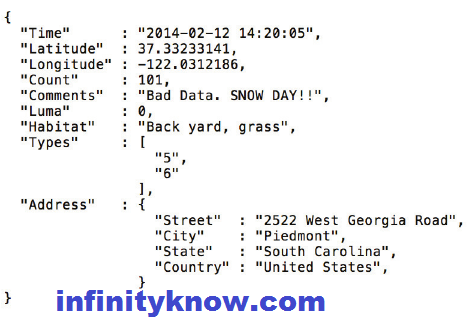
CONVERT STRING TO JSON OBJECT HOW TO
How to convert string to JSONarray in java.To do that, we need to add an extra module to Jackson so that it can handle LocalDate. We are mainly interested in using the LocalDate class which offers a powerful way to express date and time. It was introduced to address the shortcomings of the older and. Date to JSONīefore talking about Jackson and Date conversion, we need to talk about the new Date API provided by Java 8. Public class JacksonTest Working with Dates in Jacksonĭate conversions can be tricky as they can be represented with many formats and levels of specification (seconds, milliseconds, etc.). Maven Dependenciesīefore we start looking at code, we need to add Jackson Maven dependency jackson-databind which in turn transitively adds jackson-annotations and jackson-core ObjectMapper is configurable and we can customize it to our needs either directly from the ObjectMapper instance or by using Jackson annotations as we will see later. That is done by removing the “get” and “set” parts of the names of the getter and setter methods and converting the first character of the remaining method name to lowercase.įor example, say we have a JSON field called name, ObjectMapper will match it with the getter getName() and the setter setName() in the POJO. The way ObjectMapper works to figure out which JSON field maps to which POJO field is by matching the names of the JSON fields to the names of the getter and setter methods in the POJO.

On the other hand, the writeValue() method is used to turn POJOs into JSON (serialize). The readValue() method is used to parse (deserialize) JSON from a String, Stream, or File into POJOs. ObjectMapper is the most commonly used part of the Jackson library as it’s the easiest way to convert between POJOs and JSON. Simple Data Binding which converts JSON to and from Java Maps, Lists, Strings, Numbers, Booleans, and null objects.įull Data Binding which Converts JSON to and from any Java class.

It allows us to do conversion between POJOs and JSON documents using property accessors or using annotations. It is the most flexible approach as it allows us to traverse the node tree when the JSON document doesn’t map well to a POJO. An ObjectMapper is responsible for building a tree of JsonNode nodes. The Tree Model creates an in-memory tree representation of the JSON document. The API provides a JsonParser that reads JSON into POJOs and a JsonGenerator that writes POJOs into JSON. It reads and writes JSON content as discrete events. It’s the fastest approach of the three and the one with the least overhead. With those, Jackson offers us three ways to handle JSON-POJO conversion: Streaming API Under the hood, Jackson has three core packages Streaming, Databind, and Annotations. Moreover, it’s an open-source project that is actively developed and maintained by a wide community. Jackson is preferred by many people because of its maturity (13 years old) and its excellent integration with popular frameworks, such as Spring. It also supports many other data formats such as CSV, YML, and XML.

Jackson is mainly known as a library that converts JSON strings and Plain Old Java Objects (POJOs).


 0 kommentar(er)
0 kommentar(er)
